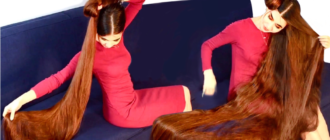Are you suffering from hypertension? And as if this is not enough, the increase in blood pressure is accompanied by a bunch of unpleasant symptoms: headache, dizziness, tinnitus, and then insomnia, decreased performance, and emotional exhaustion.
Asian doctors say: “Proper and regular acupressure will help those who want to prevent hypertension and those who have been suffering from it for more than a year!”
We will tell you how to reduce pressure quickly and effectively, and most importantly – without pills. Acupressure help!
How to reduce high blood pressure.

Acupressure is acupressure, during which the fingers gently and persistently act on certain biologically active points. Until recently, treatment and prevention of diseases through pressure on such points were considered only a method to get rid of symptoms, but today views on acupressure have changed dramatically.
It has been scientifically proven that systematic acupressure helps not only with hypertension, migraines, or insomnia, but is also an effective component of the complex treatment of acute rhinitis and bronchitis, hypotension, and is even used as a method of dealing with potency problems in men.
Massage with increased pressure will help to quickly reduce the rate to normal values, get rid of pain in the head and general malaise against the background of a painful condition, and also invigorates the body. With the right approach, hypertensive patients can improve the functionality of not only the cardiovascular but the respiratory and nervous systems.
All you need to do is to master the correct massage technique and work on the right points!
Breathe calmly, evenly, through your nose. Try to be relaxed, even if the impact on the points causes pain. Remember that the massage of active points should be smooth, accurate, and thorough, but at the same time not traumatic.

Before the procedure, thoroughly warm up your hands, eat (preferably 40 minutes before the session) and be sure to measure the pressure: if it is too high, perform an acupressure for no longer than 15 minutes. With strict observance of the technique, after an acupressure session, you feel the warmth and pleasant aches, which persist for 20–30 minutes.
1. With the pad of your thumb, find the place under the lower jaw on the left where the pulsation of the carotid artery is felt, press and hold for 10 seconds. Then release your finger, inhale deeply, exhale and press again. Repeat this procedure three times, and then do the same manipulation under the lower jaw on the right.

2. Next, press three times on the medulla oblongata (the place where the occiput passes into the neck), lingering for 10-15 seconds.
3. With three fingers of the right and left hands, simultaneously press on the area located at the bottom of the neck behind, to the right, and left of the spine. Again, repeat the acupressure three times.
4. Squeeze and stretch the middle finger on each hand for 15 seconds. Do it in sequence.
5. On the inside of the hand, find a point under the little finger and press on it for a minute. Repeat for the other hand.
6. To reduce pressure, they also act on active points on the legs located in the center of the foot, 10 cm above the heel. Work on such a point of the right and left feet for 2-3 minutes.
7. For a steady decrease in blood pressure, we recommend lightly stroking the collar area and upper chest, as well as gently massaging the neck and back of the head with fingertips.
There are a lot of acupressure points, but it is enough to choose for yourself those zones, the point impact on which causes maximum discomfort: the more unpleasant the procedure, the more effective the effect of it will be.
And remember that health is half of the happiness! At least that’s what the long-lived Asians say. Practice this acupressure technique regularly, because in the future it can save you from a dozen problems.







